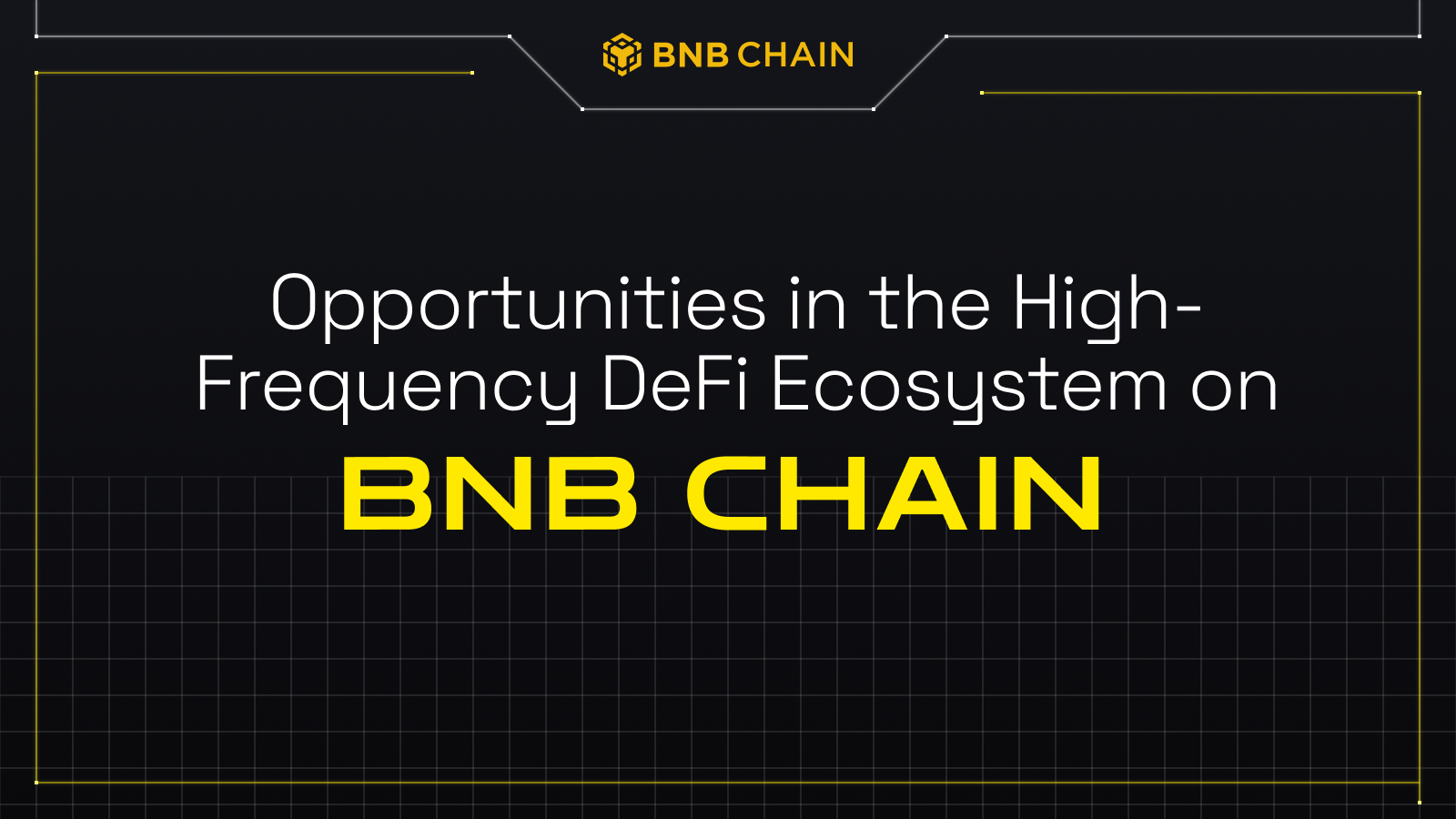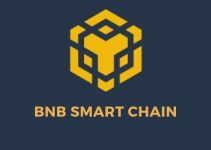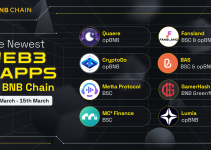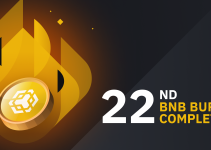Table of Contents

TL;DR
The current status of DeFi is dynamic and ever evolving. As of today, DeFi has experienced significant growth in terms of the number of projects (3,000+), the TVL (Total Value Locked) varies from $180 billion to $40 billion, user adoption, and blockchains (70+).
DeFi platforms on BNB Smart Chain (BSC) are becoming more sophisticated, and the ecosystem has expanded to include various financial instruments, including stablecoins, decentralized exchanges (DEXs), yield farming, liquidity, derivatives, and more. BSC is one of the most active chains with over 500 DeFi projects and approximately $3 billion in TVL (based on DefiLlama), along with more than 1 million daily active users (DAU).
However, when compared with CeFi (Centralized Finance), the DAU and trading volume are still relatively small at this point.
This report aims to highlight the critical opportunities and challenges present in high-frequency DeFi, while also outlining the potential future path of opBNB from these key perspectives:
- An analysis of the current state of high-frequency DeFi.
- DeFi opportunities on opBNB.
- The readiness of the opBNB infrastructure to support high-frequency DeFi.
What is High-Frequency DeFi?
High-frequency DeFi parallels High-frequency Trading (HFT) which involves executing a large number of transactions at extremely high speeds. This strategy contributes to creating liquidity and minimizes bid-ask spreads.
Here are some key attributes of high-frequency DeFi:
- Speed: The necessity of ultra-fast computing capabilities and data connections to execute transactions within fractions of a second.
- Large Trading Volume: High-frequency trading is characterized by substantial trading volumes, with the potential to execute thousands of transactions within a single trading session. Typically, coupled with significant user engagement, as indicated by daily active users (DAU) surpassing 100K or daily transactions exceeding one million.
- High Capital Efficiency: In addition to the attributes discussed above, capital efficiency stands as another vital measure for high-frequency DeFi. Total Value Locked (TVL) and trading volume may not always accurately reflect capital efficiency.
- Automation and AI: High-frequency DeFi routinely incorporates automation systems and AI to track arbitrage opportunities, which allow traders to capitalize on price discrepancies across different assets or markets.
- Risk Management: This requires the implementation of advanced risk management frameworks and robust security protocols within blockchain infrastructure.
High-frequency DeFi is a complex sector requiring advanced technological support, which may be inaccessible for solo traders or smaller firms. To achieve success in this field, some key considerations have to be included:
Refer to Deloitte
- High Throughput: The blockchain must be equipped to handle high volumes of transactions per second, which is essential to support the brisk pace of high-frequency DeFi.
- Low Fees: Low transaction fees are vital for enabling cost-effective user engagement with DeFi services.
- Scalability: The blockchain must scale efficiently to handle high trading volumes, ensuring it can accommodate more users and transactions while keeping performance high.
- Security: It is challenging but crucial to balance performance, security, and scalability in high-frequency DeFi to protect assets and transactions.
- Mature Ecosystem: Given its complexity, high-frequency DeFi relies on a mature ecosystem with robust infrastructure to meet its specific needs.
To thrive in high-frequency DeFi, a blockchain must excel in key areas to be well-suited for this specialized, fast-paced setting. Although hundreds of blockchains are trying different approaches across various categories, high-frequency DeFi still struggles with low capital efficiency, liquidity, and activity. Velocity is a better measure of high-frequency DeFi. Based on the comparison of the leading blockchains in TVL, trading volume, and velocity, we can conclude that “The faster and cheaper the chain is, the higher the velocity will be.”
| Network | Oct. Avg.TVL | Oct. Avg.Trading Vol | Oct. Avg. Velocity (Vol/TVL) |
| Solana | 339.6M | 59.8M | 0.176 |
| Arbitrum | 1.7B | 260.2M | 0.15 |
| Polygon | 755.6M | 112.4M | 0.149 |
| BSC | 2.8B | 224.7M | 0.081 |
| Optimism | 625.1M | 37M | 0.0591 |
| Ethereum | 21B | 912.3M | 0.043 |
Data source: DefiLlama
Current State in High-Frequency DeFi
DeFi seeks to offer services comparable to those in traditional finance (TradFi), while leveraging blockchain technology and the ability to automate. This has given rise to a wide range of innovative applications, as illustrated below. The DeFi ecosystem is divided into three tiers, each with its own subcategories.
High-frequency trading standout, calling for high performance, throughput, and gas efficiency.
Refer to Medium
DeFi, on platforms like Uniswap and PancakeSwap to AAVE, Compound, MakerDAO, Venus, and GMX, have hit key milestones, setting the stage for trading, lending, and derivatives. Yet, the high-frequency DeFi space still has its gaps.
In line with Vitalik’s observations in this article, and drawing a parallel with our DeFi landscape, several key building blocks are either absent or possess limited functionalities so far:
Assets
Stablecoins are the foundation of high-frequency DeFi, CeFi, and even RWAs.
Advantages of stablecoins are that they are:
- Open to anyone
- Resistant to the most large-scale and opaque forms of censorship
- Interact well with on-chain infrastructure (accounts, DEXes, etc), and offer stability and liquidity.
- Act as bridges between TradFi and DeFi, simplifying user access to Web3 financial services.
In the market, there are more than 100 stablecoins, with a combined total supply of $125 billion. The prevailing landscape is dominated by centralized stablecoins, commanding a significant market share of up to 88%. The top chains are all dominated by USDT:
Refer to DefiLlama
Tron chain has become the most frequently used blockchain in stablecoins activities with around $50 billion market cap. According to Brevan Howard’s data, its weekly on-chain stablecoin transaction volume is currently $70 billion, and about 40% of active addresses sending stablecoins on-chain are on Tron. Tron is one of the most successful blockchains that focuses on stablecoins, such as USDT, USDC, TUSD, and USDJ, but most of them are centralized stablecoins.
While there are numerous commendable attempts – it’s worth noting that First Digital (FDUSD) is a reserve-backed stablecoin issued by a subsidiary of a Hong Kong-headquartered financial firm on Ethereum and BNBChain networks. PYUSD, another stablecoin designed for seamless payments issued by Paxos Trust Company is also a good try in the stablecoin ecosystem. The market also boasts a variety of decentralized stablecoins, including but not limited to DAI, FRAX, and RAI among others.
Primitives
- Payment infrastructure, basically token transfers, has been enough for applications like DeFi, NFT marketplaces, and stablecoin issuance. However, the applications of tomorrow will be more sophisticated and must leverage the nature of “programmable money”. At the same time, several key obstacles have to be overcome:
- Cryptocurrency Volatility: The intrinsic volatility of cryptocurrency presents a significant challenge in its adoption for payment solutions.
- Scalability Challenges: These can be effectively addressed by incorporating optimistic or ZK rollups.
- Regulatory Complexity: Ongoing efforts are aimed at navigating the complex and evolving regulatory frameworks across various regions.
- Complex Processes: The implementation of solutions such as social login and multisig, coupled with account abstraction (AA), can enhance practicality and convenience for users.
Alchemy’s dApps demonstrate a robust payment landscape, yet a universal solution remains to be seen. Traditional payment giants have made multiple attempts at crypto payment: on September 11, 2023, PayPal unveiled convenient on- and off-ramps for Web3 payments. Visa has recently taken a notable step by selecting Solana as its settlement layer, attracted by its low gas fees — as minimal as $0.0002 in Q2 of this year — and its exceptionally high transaction processing speed.
Bitpay, a Web3-native payment service, allows users to buy, store, exchange, and spend cryptocurrency seamlessly in one app. Despite Bitpay’s success and benefits, a fully developed Web3 payment infrastructure that can handle high-frequency transactions is still in the early stages of development.
- Perpetuals require a CeFi-like user experience to attract more users. Derivatives trading platforms, including perpetuals, options, and prediction markets, should function as an integrated unit. They must aim to deliver an experience characterized by speed, minimal latency, and low fees for traders.
Refer to DefiLlama
GMX is one of the most successful decentralized perpetuals, which has contributed around $529M TVL and $147B trading volume in Arbitrum. In August 2023, GMX V2 was introduced and the core of it is to ensure the security and balance of the protocol by modifying the fee mechanism to maintain a balanced long and short position. GMX V2 also provides lots of new features for liquidity providers and traders, see details. GMX originates from Arbitrum and contributes a lot to the DeFi boom on the platform, thanks to its enhanced performance and reduced gas costs
dYdX is another pioneer in decentralized perpetual, and its unique order book model offers a high-quality user experience. On October 24th, dYdX announced the release of dYdX Chain V1.0, marking the official start of the exchange’s v4 upgrade and the transition from the Ethereum Layer 2 network to an independent blockchain in the Cosmos ecosystem.
So, why dYdX chain? According to their announcement, dYdX needs to efficiently process a high-quality orderbook and matching engine. Currently, dYdX handles about 10 trades and 1,000 order placements or cancellations each second (at least 1,000 TPS if these are fully on-chain). The new dYdX chain aims to double this capacity to 2,000 transactions per second and introduce gasless trades, which stands out in high-frequency DeFi.
- On-chain CLOBs represent a type of computationally intensive platform that can also serve as the cornerstone of high-frequency DeFi platforms.
Serum, serving as a fundamental component of Solana’s DeFi ecosystem, is among the pioneering on-chain Central Limit Order Books (CLOBs) that have spurred Solana DeFi’s expansion. It offers traders a decentralized iteration of order book trading, featuring a fully on-chain orderbook, rapid settlement within one second, and minimal fees as low as $0.00002. These functionalities necessitate blockchains that provide high throughput and low transaction costs.
While there have been attempts in this direction, widespread adoption of fully on-chain CLOBs remains a distant prospect. Implementing such systems does pose significant challenges and complexities.
- Prediction markets or betting platforms let users bet on future events and require fast, scalable infrastructure for high-frequency trading. Yet, these markets are still in early development, with few active players.
Refer to DefiLlama
Optimisers
- Trading bots/MEV usually refer to telegram trading bots. Trading bots offer an array of automated trading functions, such as copy trading, liquidity sniping, airdrop farming, MEV prevention, rug-pull protection, and the ability to implement take-profit and stop-loss orders.
Maestro is a distinguished Telegram trading bot that allows users to quickly spot and buy tokens at launch, positioning them as early investors. Traders can set up auto-sell strategies to sell at target prices. It also provides defenses against fraud and rug pulls.
Unibot is powered by Diamond Protocol which focuses on building trading products on Ethereum. To date, Unibot has facilitated an impressive $420 million in trading volume and generated $7.3 million in revenue. It serves as a welcoming gateway for newcomers, offering a user-friendly interface while also catering to diverse user needs with features like limit orders, mirror sniper, fail guard sell, and private transactions.
opBNB DeFi Opportunities
Looking back at the path to the opBNB Mainnet, our dedication to scalability and security set the stage for vital milestones. opBNB has achieved every requirement for its Mainnet genesis:
- High Availability (HA) solution to prevent a single point of failure.
- Achieving a peak of 4K transactions per second(TPS).
- Ensure super cheaper gas costs with an average of 0.2gwei, and transaction cost reduced to as low as $0.005 per transfer transaction.
- Security is our top priority: Truseless approach with no assumptions about the Sequencer.
High-frequency DeFi has the potential to reshape finance with its inclusive, clear, and globally accessible services. However, its expansion is curbed by scalability and cost issues. OpBNB offers a compelling solution to these hurdles, paving the way for DeFi’s success. With opBNB, DeFi platforms gain the advantage of lower gas costs, faster confirmations, and enhanced security, creating a win-win scenario. DeFi’s possibilities are unleashed, and opBNB proves its scalability under tough conditions
As we’ve discussed, opBNB is in the early stages, which means it has a formative future where opportunities abound for experimentation. Even with Arbitrum’s advanced DeFi ecosystem, opBNB has its opportunities and unique strengths:
- Stablecoin Ecosystem: Investing in a stablecoin ecosystem with decentralized, stable, and trustworthy options is crucial for DeFi. FDUSD and USDT are available on opBNB, and we’re actively adding more decentralized stablecoins to strengthen our offerings.
- Payments: Our payment system aligns with opBNB’s high-performance, low-cost ethos. According to Messari’s report, the payment infrastructure can be segmented into streams, splits, and smart payments. Each of these key components shows promising potential on opBNB.
- Advanced DeFi: For professional traders, KiloEX is opBNB’s first user-friendly perpetual DEX, enabling fast trades and providing risk-neutral and liquidity provider-friendly solutions.
- Trading Bots/MEV: The user-friendly approach makes it easy for new users to join, but we still need to incorporate this feature into the opBNB ecosystem
Infra Readiness for High-Frequency DeFi
OpBNB, as a relatively new OP-based Layer 2 (L2), has impressively launched its Mainnet in less than a month. Notably, within this short span, its infrastructure and tooling ecosystem has significantly matured. It has transitioned from having one project per category to hosting multiple active contributors.
However, it is essential to acknowledge that there are still areas primed for enhancement (Governance, Data analysis, Payment, and more), eagerly awaiting the community’s innovative ideas to further enhance the ecosystem.
The opBNB infrastructure is continuously being improved and it has already established robust infrastructure to help projects deploy, including:
- GraphQL/Indexing: NodeReal now provides the same deployment as TheGraph
- Oracle/VRF: DeFi projects using Chainlink or Pyth can now access Binance Oracle. For SocialFi and GameFi, Binance Oracle has support for opBNB VRF. Developers can contact Binance Oracle for product support and demos
- Bridge (Withdrawal/Deposit): Binance supports opBNB with Tokens open for deposits and withdrawals, including integrated charge (BNB/USDT/FDUSD) and integrated bridge (BNB/USDT/FDUSD). Polyhedra and Rhino.fi also support quick withdrawals, which are integrated into the official bridge
- Multi-sig: BNB Safe Multi-sig solution is readily available
- Wallet: provides access to opBNB, including Metamask, TrustWallet and WalletConnect.
- Account Abstraction (AA): CyberConnect, Particle Network, Biconomy are integrated with opBNB
- DAO Tooling: XDao and Snapshot
- NFT Marketplace: Element’s NFT Marketplace is live on opBNB
- Data Analytics: DefiLlama, CoinGecko, DappBay support opBNB
The overall infrastructure framework is nearly in place. However, some limitations remain in the context of high-frequency DeFi scenarios, such as MEV tools, high-performance data indexing, low-latency oracles and bridges, and more.
Conclusion
Numerous high-frequency DeFi applications are in the pipeline, but their broad adoption is curtailed by the limitations of existing technologies, like scalability, low performance, and high gas fees.
opBNB distinguishes itself within the DeFi space, not merely as a Layer 2 solution but as a potential game-changer. It stands poised to redefine the trajectory of high-frequency DeFi with its commitment to speed, reduced costs, enhanced security, and scalability. We believe that opBNB has the potential to be a cornerstone solution for high-frequency DeFi, and our efforts are dedicated to realizing this vision.


